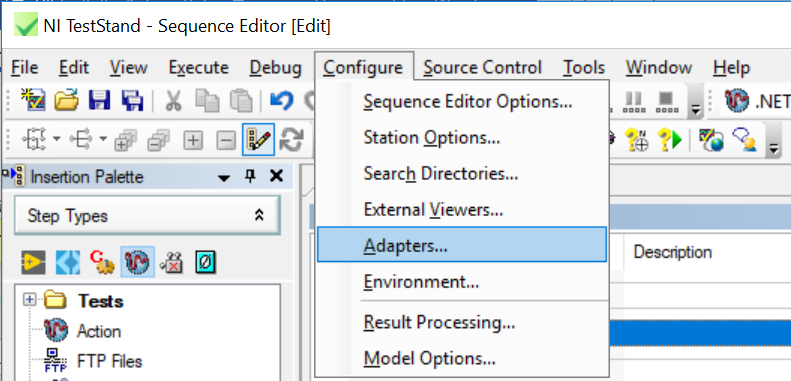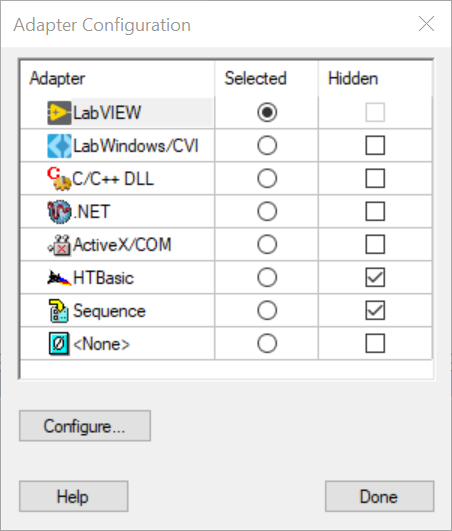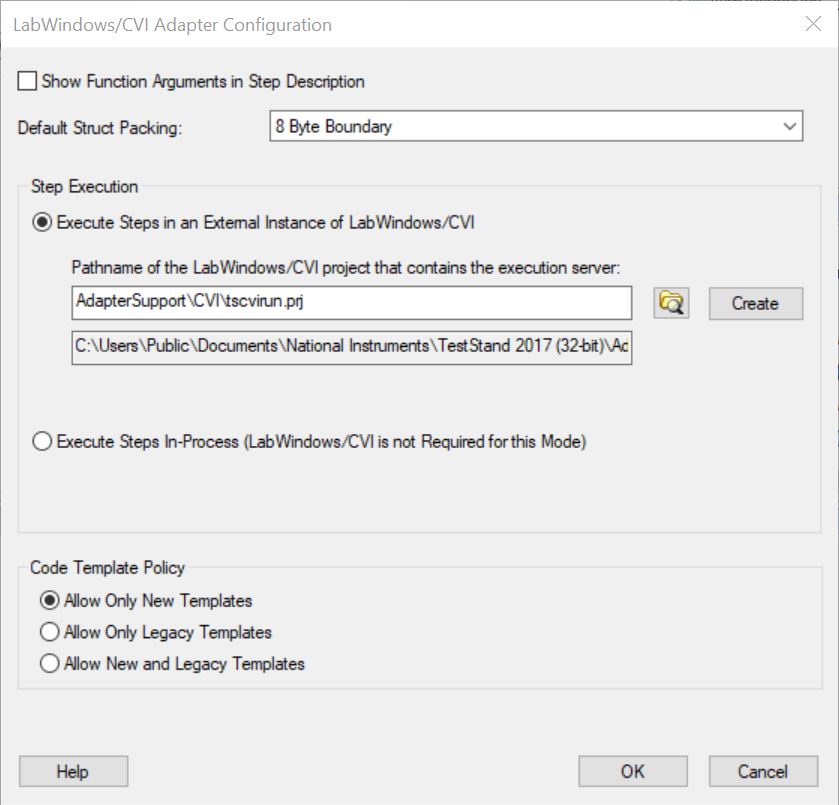The steps below show you how to configure LabVIEW and LabWindows™/CVI™ code adapters to execute code modules out-of-process. This is accomplished by configuring the adapter to use the LabVIEW Development System or the LabWindows/CVI development environment to execute code modules, which allows the code modules to access a separate memory space from the TestStand process itself.
Since the LabVIEW Development System is a separate process from TestStand, it is also possible to use a 32-bit version of the LabVIEW Development System to execute 32-bit VIs from 64-bit TestStand.
- In TestStand, select Configure»Adapters...

The Adaptor Configuration dialog box appears, in which you can change settings that apply to each adapter.
- Enable the Selected button next to the adapter you want to configure. Click the Configure… button.

The Configuration dialog box for the adapter appears.
- For LabVIEW, select LabVIEW Development System and specify which version. If you want to execute 32-bit VIs, select Use Active 32-bit Version.
Note: By selecting Use Active 32-bit Version, all LabVIEW VIs in the test sequence will execute in the 32-bit LabVIEW Development System. However, individual VIs can be configured to Always Run VI In LabVIEW Run-Time Engine, which would allow a 64-bit VI to be executed in-process during the execution. This setting can be configured on the Advanced Settings dialog of a step with a LabVIEW code module.

For LabWindows/CVI, select Execute Steps in an External Instance of LabWindows/CVI.

- Click OK. You have now configured the Adapter to execute out-of-process.